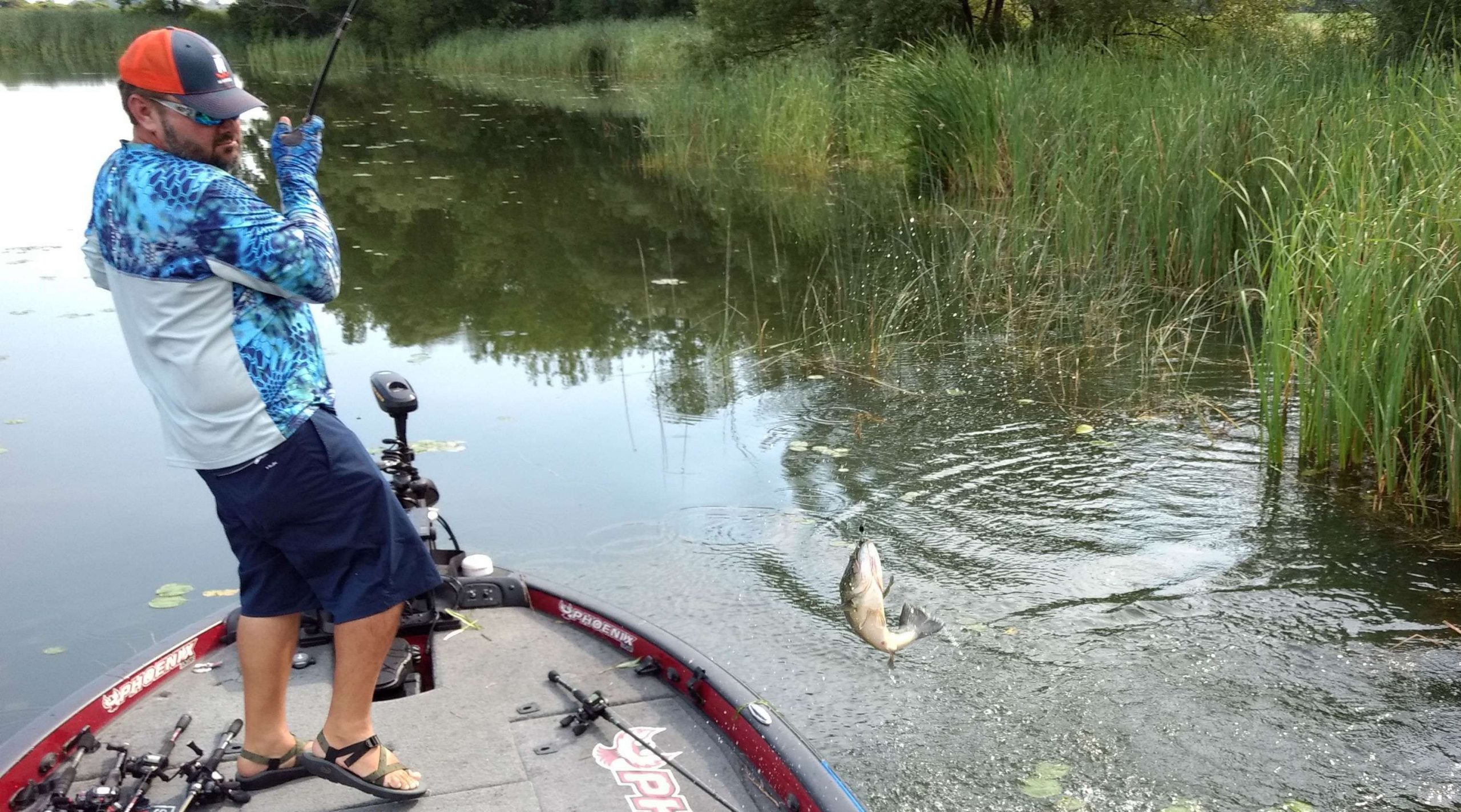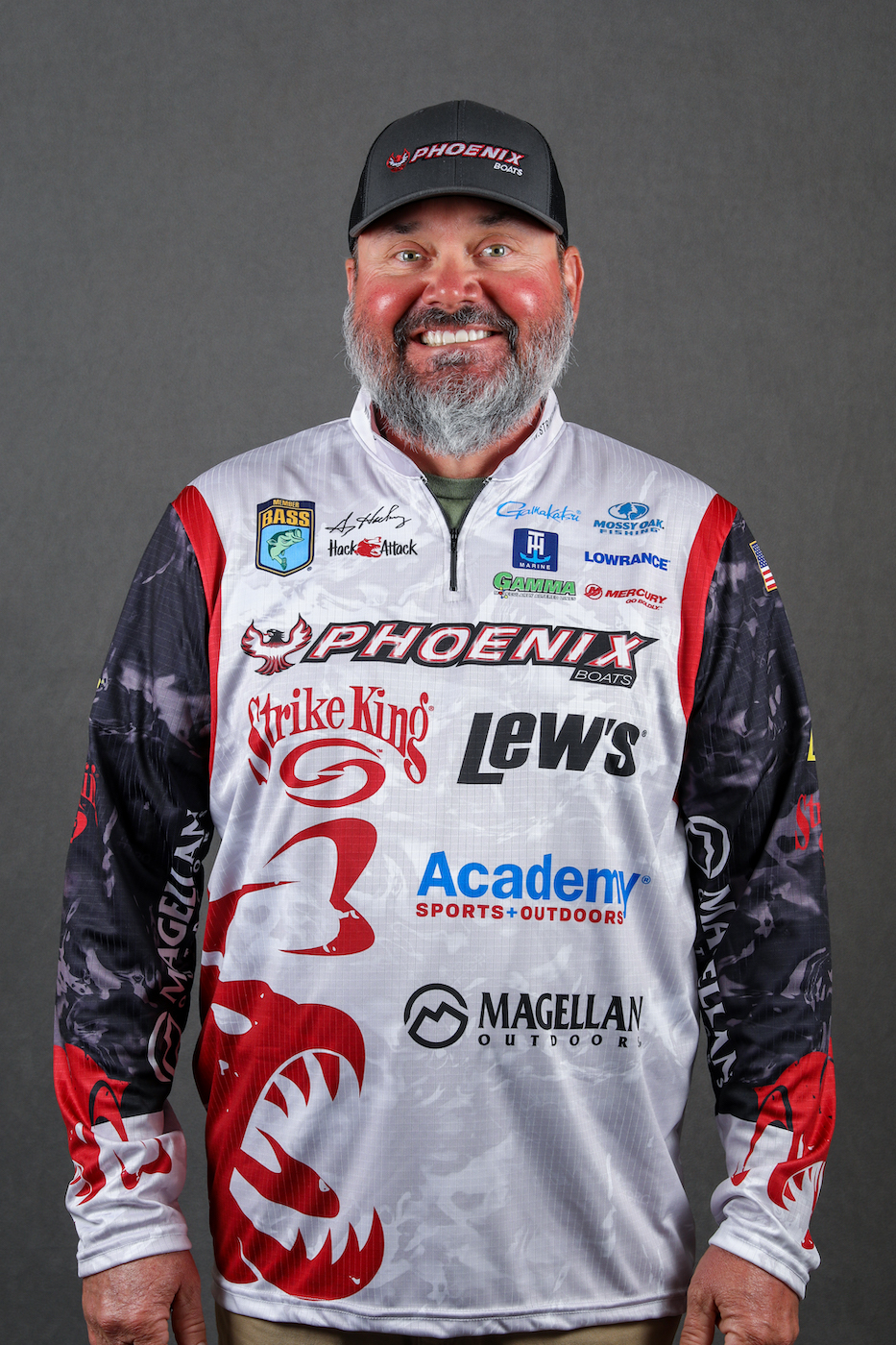
Flippin’ and pitchin’ are a big part of successful bass fishing. It’s hard to consistently catch bass if you can’t do those things efficiently. The thing is, though, most of what’s out there about those two techniques centers on baits and rigging, with an occasional reference to line. What’s just as important is your rod.
You must be able to put your bait where it needs to be — accuracy is critically important with both of these techniques — and you must be able to do it all day without wearing yourself out.
At the same time you need something that’ll give you a good hookset every time you get a bite. Bass explode when you set the hook in close like that. There’s no time for messing around. You need to get them to the boat in a hurry.
I use two different rods when I pitch and flip. It depends on what type of line I’m using. With fluorocarbon I go with a 7-foot, 10-inch heavy action, fast tip model. The idea is to have a lot of backbone and a tip with some give in it.
Fluorocarbon line has some stretch to it so you get a certain amount of forgiveness with the line. That’s why you need a fast tip to keep you from breaking off or pulling the hook out.
My choice is a fairly long rod. It gives me more distance on my pitch and flip and more control over the fish when it explodes on the bait.
But, I also want to give you the other side of the coin when it comes to rod length because there are certain advantages to shorter lengths. One is that if you’re a shorter person you’ll have an easier time with a shorter rod. Another is that a shorter rod will double as a heavy casting rod for heavier baits or when you’re casting Texas rigged plastic lures.
My fluorocarbon rod is from the Quantum PT Series. The one I use is made in the 7-10 length but it’s also made shorter, all the way down to 7-feet, 2-inches with the same backbone and the same tip.
When I’m using braid I go with a slower action rod. Braid is a wonderful line, but it’s unforgiving— no stretch. That means that whatever forgiveness you’re going to get is going to come from the rod.
My choice is a 7-foot, 11-inch model with a slow action. When this rod loads up it bends almost down to the handle. If you watch me when a bass bites my lure you won’t be able to tell the difference between a 3-pounder and a 6-pounder. They’ll both put my rod into a big arc.
My braid rod here is also a Quantum PT rod. This rod, the Hack Attack, was designed and made specifically for me so it doesn’t come in any other lengths.
As far as reels are concerned I want a high-speed model with a smaller profile and a big spool. I’m using a Quantum Smoke S3 with an 8.1:1 gear ratio for both fluorocarbon and braid.
Here’s the deal: One size doesn’t fit all when it comes to a pitchin’ and flippin’ rod so you need to select what works best for you. But, it’s very important that you buy and use a good, high-quality one. Every hookset puts a ton of strain on your rod. Cheap or second-class doesn’t get it.
Something else: When you go to pick out a pitchin’ or flippin’ stick make sure you look at it and mess with it before you buy it. There’s no industry standard for heavy and extra-heavy and there’s no industry standard for a fast or extra-fast tip. They’re all a little different.
And, beware of lightweight rods. They feel good in the tackle shop, but they’ll beat you to death with a heavy jig or worm weight on the end of them. The more the rod weighs the less stress there’ll be on your arm, wrist and hand at the end of the day with those weights.
With the right rod your pitching and flipping performance will get better overnight. Take advantage of that.

